It is accepted wisdom that David MacNeil, impresario of WeatherTech “laser-measured” plastic floor liners, bought Ferrari GTO 4153 GT five years ago for something like $70 million.
That turned out to be optimistic timing even considering 4153 GT’s long and moderately successful competition career.
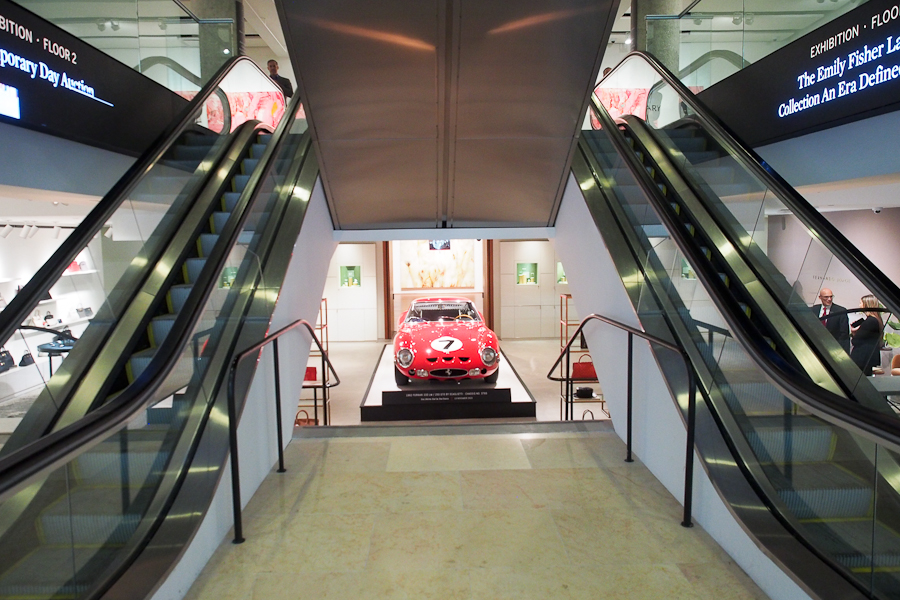
RM Sotheby’s sold GTO s/n 3765 at Sotheby’s York Avenue, New York City headquarters in a single car auction on November 13 for $47 million hammer, $51,700,000 with the estimable $4.7 million buyer’s premium before the regular high art evening Modern auction. It was the most expensive Ferrari sold at public auction, 6.8% more than the $48,405,000 RM got for GTO 3413 at Monterey five years ago in 2018.
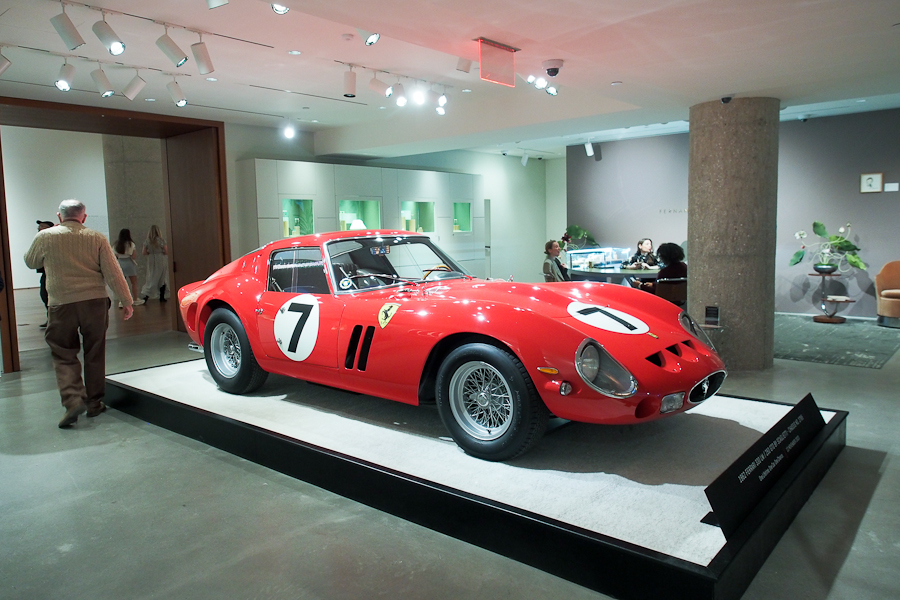
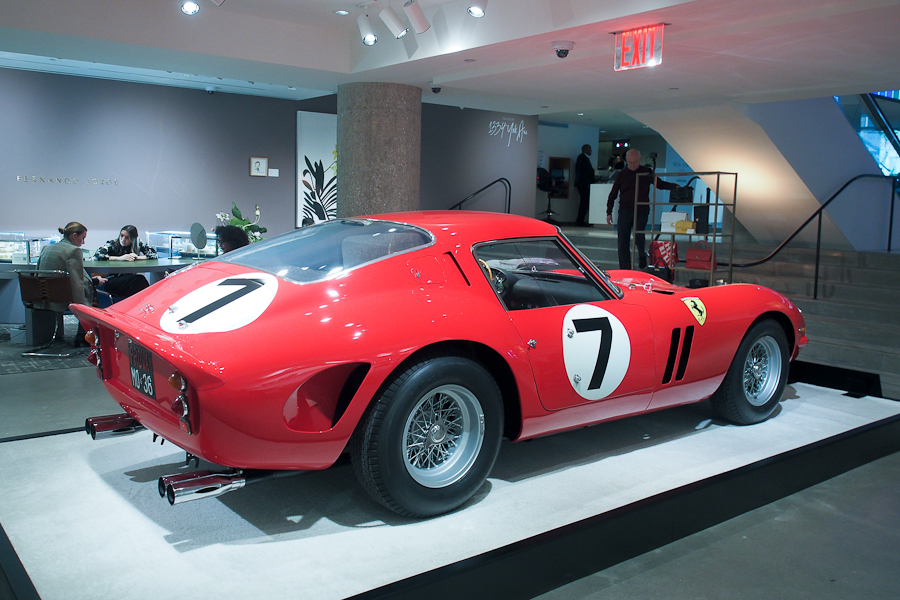
This is a summary of 3765’s presentation:
330 LM/250 GTO Scaglietti Berlinetta; S/N 3765; Engine # None; Rosso Cina with Black leatherette, Blue cloth inserts; Estimate >$60 million. Competition restoration, 2- condition. – 2,953/305hp, dry sump, six Weber carburetors, SNAP exhaust tips, 5-speed, painted Borrani wire wheels, Dunlop Racing tires, Marchal headlights and fog lights, roll bar, outside fuel filler, sliding Plexiglas side windows – Originally built as a factory experiment to meet changing rules with a 330 (4-litre) engine. Class winner and 2nd overall at the Nürburgring 1000km, then raced at Le Mans by Mike Parkes and Lorenzo Bandini in 1962 with six carburetor intake where it was a dnf after Parkes grounded it on a sand bank at the Mulsanne corner and it later overheated, both entries by SEFAC, the Ferrari factory. Rebuilt by Ferrari in 1963 with the current 3-litre 250 P development engine internal number 670/62E with six carburetors (Ferrari build sheet documented) and sold to Pietro Ferraro. Later sold to Ferdinando Latteri and raced, mostly in Sicily. Later history in the U.S. including with Fred Leydorf in 1974, from him to the present owner in 1985 who had it restored by Shelton Ferrari with many subsequent concours and show awards including placing 2nd at the Pebble Beach 250 GTO gathering in 2011 among 23 GTOs. Good but thick paint with some usage scrapes including behind the driver’s door and stress cracks at the tops of both windshield posts. Beginning delamination at the upper windshield corners. Clean, orderly engine compartment, chassis and underbody. Good interior with lightly stretched driver’s seat cloth inserts. A well-restored and superbly maintained Ferrari that is in nearly like new condition without being over restored. Thoroughly documented, present unnumbered engine with factory internal number since 1963 and the only GTO (even if it was called a 330 LM at the time) campaigned by the Ferrari factory. – Offered by RM Sotheby’s at a single lot sale on November 13, 2023 bracketed by Sotheby’s traditional Fall Modern and Contemporary Art auctions. Bidding opened at $34 million, advanced in $2 million increments from phone and live bidders to $45 million and announced “for sale” at that point. Bidding inched [sic] up from there in $1 million and $500,000 increments to $47 million and hammered sold to a bidder in the room. This car never won anything important and it had been re-engined by Ferrari in 1963 from its original 4-litre six-Weber engine to a six-Weber 3-litre engine taken from a 250 P before being sold to its first private owner. RM bruited a value of “over $60 million” but that was never gonna happen and $50 million was a stretch which 3765 met only by adding the Buyer’s Premium to the $47 million successful hammer bid. Sold to a bidder in the room at Sotheby’s. There is an irrelevant discrepancy in the final result of $5,000 because auctioneer Oliver Barker announced the BP as 10% but RM automatically calculated it at 12% of the first $250,000 and 10% thereafter as stated in the catalog. Block announcements rule, however, and this should be the accurate final price … $5,000 (0.0097%) is less than rounding error and makes no difference at all at this price. I was in NYC to preview 3765 (note there is no “GT” in its chassis number) and was asked about its value by a New Yorker casually wandering through and finding the Rosso Cina Ferrari a curious oddment among the Chagalls, Dalis and Picassos. I told him, “RM is suggesting ‘over $60 million’ but if it gets to $45 or 50 million with money in the room I think it’ll sell” and it did. This is real money for a real GTO with a Le Mans history and a Ferrari-installed ex-250 P engine to make it a 250 GTO. What would it be worth with its original 4-litre 330 competition engine? The mind boggles.
The 330 LM/250 GTO was prominently positioned before Sotheby’s New York evening Modern art auction, placing it in the context of “art” rather than functional technology. It worked, with the LM/GTO bringing twice as much as the day’s most expensive Modern Art lot, Picasso’s “Compotier et guitare” from 1932 which sold for $23,463,500.
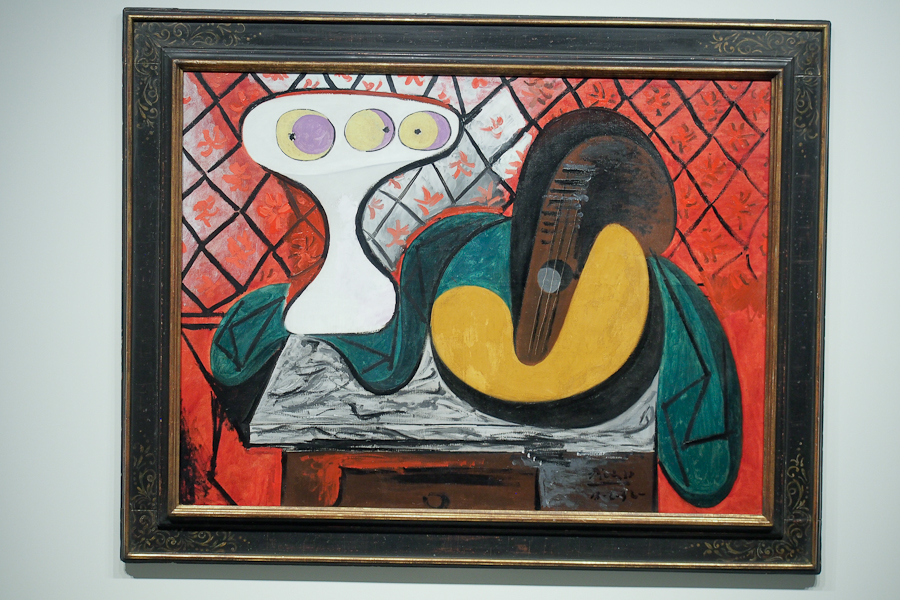
For less than half the $4.7 million Buyer’s Premium the new owner could hang Alexander Calder’s “Le Lys” mobile over it after it brought a mere $2,238,000, a lovely contrast of mobile form and function.
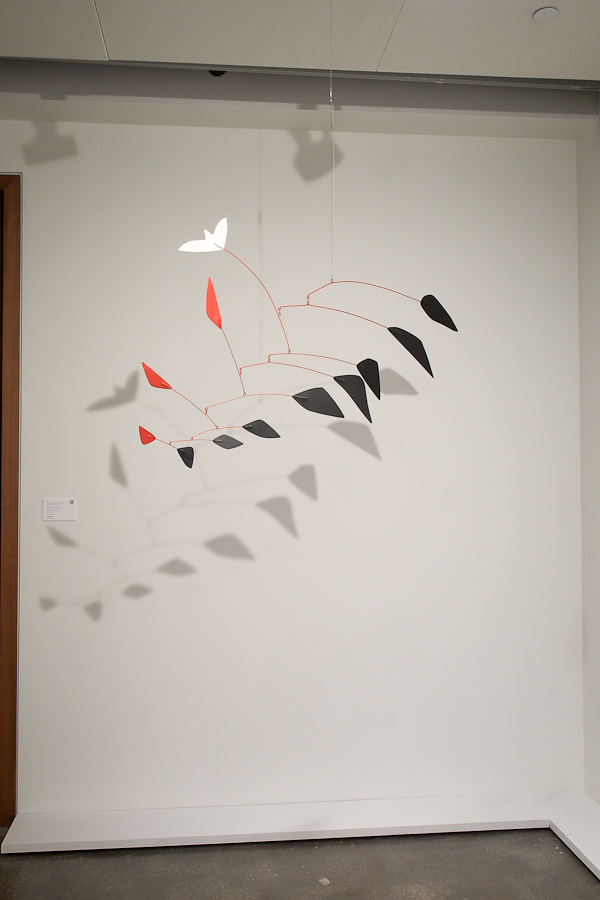
The paintings, sculpture and assemblages can’t be driven. They emit no gripping sound when hanging on the wall or from the ceiling. They provide only emotional realization when viewed, not the grip and feedback of cornering the Ferrari. Even the Calder mobile, as beautiful as it is, moves only on wisps of air not the impetus of twelve vibrant cylinders and six air-gulping Webers.
RM’s description of s/n 3765 was long. It concentrated on its material, competition and ownership history, unlike Sotheby’s descriptions of the artworks that were long on interpretation, explanation and artistic evolution.
What car cataloger would think of describing the Ferrari GTO in similar terms to this Magritte, “Le Monde poétique” which sold for $1,875,000.

“[Magritte]’s use of such imagery and body parts, however, is rarely violent. Rather than evoking destruction or deformation, he uses the fragments of the human form in the same way he would isolate an element of a landscape or an object and place it in an unexpected environment. In the present work, a sense of mystery and ambiguity is created by the placement of the serpentine, detached eye upon a tightly orchestrated stage. The composition is framed by gathered curtains and vaguely menacing pyramidal shapes, two objects that are seemingly unrelated and yet united within the pictorial space of the painting. Magritte’s penchant for unifying the unrelated in a single image can be seen in previous compositions, but his approach here makes the arrangement all the more enigmatic and is typical of this early period of his surrealist work.”
The same could, probably should and may become, common in describing cars like the 330 LM/250 GTO (or the 412P/330 P3/4 that Bonhams sold at Quail Lodge three months ago) that are sensuous, living forms that, like Marc Chagal’s “Au-Dessue de la Ville” (sold for $15,616,200), embody speed, emotion and a vibrant interaction with their environment.
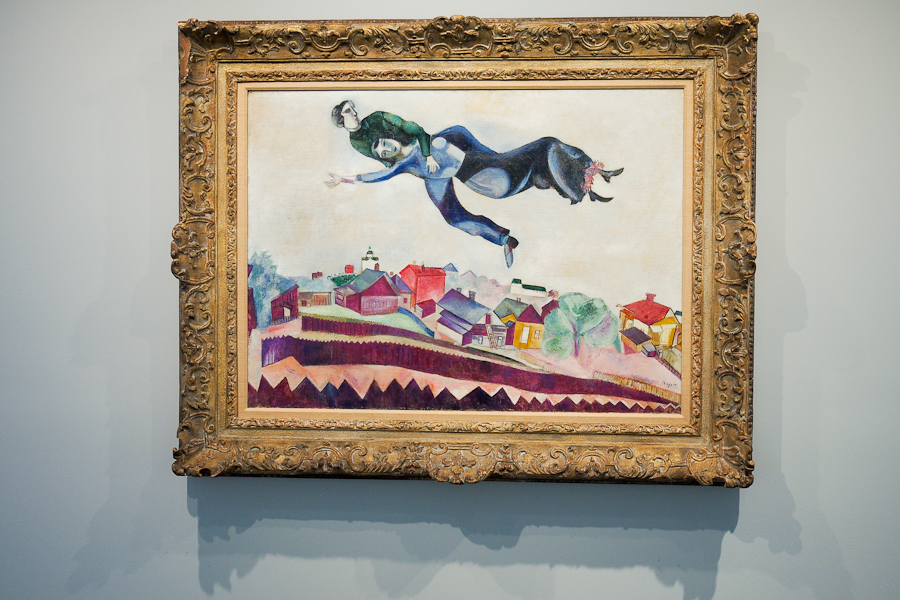
I’d say RM Sotheby’s experiment was successful and anticipate more of it, leveraging their cooperation with Sotheby’s to mingle fine art and fine automobiles.
Although I agree that placing such a fine car as this GTO among art is a good mix, I think that it would have looked more at home with older classics, such as from the Renaissance, where humanistic form, natural light, and the study of their interaction would be more in line with the purposeful beauty of the classic sports car.
Ron,
An interesting approach but I am inclined to agree with RMS’s time-linked placement, particularly as the following Modern Evening auction offered a variety of mediums and methods that helped encompass the GTO. I think, too, that RMS was looking to appeal to both groups of buyers, hoping to sell wall art to GTO bidders, and the GTO to established wall art bidders. The ex-Michael Schumacher F2001 GP car did as well as it did partially because it was part of the evening auction with art both before and after while the GTO was peddled in a closed room with only GTO bidders (and a few hangers-on) in attendance and nothing else on the docket which lessened the opportunity for intersectional selling.